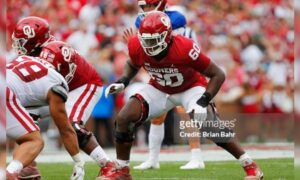Ask a Pittsburgh Steelers’ fan what position they’d like to see brought in during free agency, and they’re likely to respond with a cornerback. While that sounds nice, and to an extent understandable, if you look historically, it seems unlikely.
Don’t fret. That doesn’t mean they’re automatically going to ignore the entire secondary. You just have to look a little farther than cornerback. Specifically, a little bit behind: safety.
Dave Bryan put in a ton of work last year on all the free agents Kevin Colbert has brought in since 2000. It was mainly to illustrate the under-30 free agents they tend to sign but provides a Rolodex of names we can always lean on. Let’s break down the cornerbacks inked since Colbert’s arrivial.
Cornerback
2004 – Willie Williams
2009 – Keiwan Ratliff
2013 – William Gay
2014 – Brice McCain
While you could argue the Steelers have been more active in recent years, it’s only because of how completely inactive they were previously. Williams and Gay were in their second stints with the team, Ratliff was cut in November of ’09, and McCain was the worst rated corner when he was brought in, though obviously he exceeded expectations.
That’s it. Four corners over a span of 15 seasons. Only two truly outside selections. And if you’ve ever been around this site during draft season, we’ve spent so much time laying out how rare it is to take a cornerback high in the draft. But to look at it again, let’s list the cornerbacks taken within the first two rounds since Colbert was hired.
2004 – Ricardo Colclough
2005 – Bryant McFadden
2015 – Senquez Golson
All three were taken in the second round.
You get the point. Without question, cornerback is the lowest priority position the Steelers’ value. It makes sense. With their Cover 3 scheme, they desire cornerbacks who are physical, can tackle the catch, support the run. Those aren’t guys you have to throw ridiculous amounts of money to or spend a first round pick on. Those are the shutdown, man corners, who can turn in a 4.4 flat and pick off seven passes a season.
Let’s look at how the team has valued safeties, using the same general guidelines.
Safety
Again, we’ll begin with the free agents brought in under Colbert.
2000 – Brent Alexander
2001 – Mike Logan
2005 – Tyrone Carter
2006 – Ryan Clark
2010 – Will Allen
2014 – Mike Mitchell
Not all of those were sexy, big-name signings but for the Steelers’ standards, it’s a heavy investment. Alexander started all 16 games in his first year and for the rest of his Pittsburgh career, leaving after the 2003 season. Ryan Clark and Mike Mitchell were big-name, long-term players.
Clark signed a four year, $7 million deal initially and re-upped at the last second, signing another four year, $14 million contract in 2010. That original seven million dollar deal might not seem like much now, but the salary cap was significantly smaller, $102 million for the 2006. Only safeties Corey Chavous and Marlon McCree got a substantial larger yearly value than Clark, who was paid similar to Dexter Jackson and Adam Archuleta.
Mitchell’s signing came out of left field, inked to a five year, $25 million deal. For Pittsburgh, a big investment of cash in a player, and one that has largely worked out two years in.
Even the non-starters, Logan, Carter, and Allen – who would grab onto the starting role at various points throughout his on-again, off-again Steelers’ tenure – are still recognizable names.
Let’s turn our attention to the draft. Again, same criteria. Second round or earlier.
2003 – Troy Polamalu
2006 – Anthony Smith (Edit: 3rd rounder, I’m dumb)
The only time Polamalu and Smith’s names will be that close together. A little less active, though the team spent a first rounder on Troy, and when you have the free agents Colbert brought in, it made the position less of a focus come Draft Day. This also doesn’t include drafting Chris Hope in the third round or trading up to acquire Shamarko Thomas. Though Thomas has not panned out, the aggressive move to nab a safety – then, the heir to Troy’s throne – is just another example of the value this organization has placed on the position.
Philosophically, it makes sense. In this system. the line between strong and free safety has been blurred. Each player asked to carry out every assignment and aspect of defense. Play the deep half, single high. Come down in the box and support the run. Be an enforcer over the middle but come through with a splash play. Blitz in the array of packages Dick LeBeau and Keith Butler have.
Sure, they’ll tailor the positions based on the current starter’s strengths and weaknesses. Will Allen spent a large chunk of his time in the box while Mike Mitchell patrolled centerfield, but the job description is more vague and expansive than it is for cornerback. It requires a better skillset and naturally, larger investments, both financially and in the draft.
Of course, maybe the philosophy has changed. Perhaps drafting Senquez Golson and Gerod Holliman – two ballhawks who didn’t completely fit the mold – is a sign. Five years from now, we could look back and laugh at what I’ve written. We’re using history as our guide, not a crystal ball.
But the point is to highlight two main ideas.
Continue to dispel the wish that the Steelers are going to look at a high-prized cornerback in free agency or the draft.
But it’s to show the Steelers don’t ignore the secondary entirely and in fact, place a high priority on safety. I’m not forgetting Robert Golden here – I think he can be a starter in the league – but if the Steelers don’t, or if he wants to explore the market, the Steelers could be make a play for another name. I’m not saying it’ll be Eric Berry, but if there’s on spot to look for a splash, it’s safety. Check out my free agent wishlist on Wednesday where I’ll list several safeties I’m interested in.








